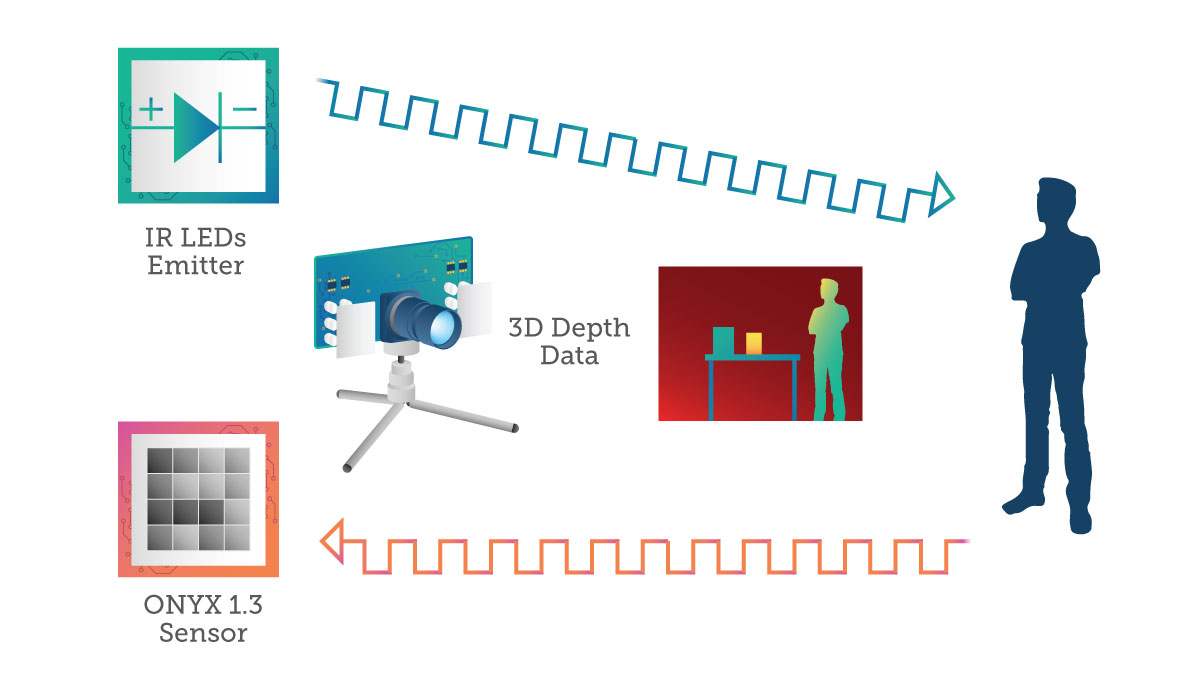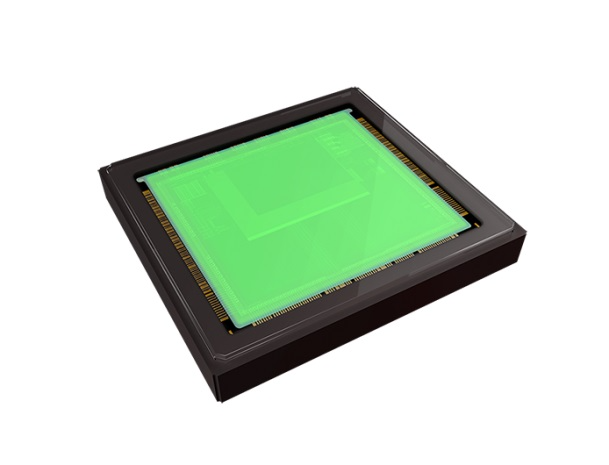Ha Lan DO THU, marketing manager for 3D products and applications at Teledyne e2v, speaks to AZoM about the Hydra3D CMOS Sensor, and how it can capture large and fast-moving scenes using optimal lighting power.
Please Tell Us About Teledyne e2v and What You Do.
Teledyne e2v is part of the Teledyne Imaging Group, whose innovations lead developments in healthcare, life sciences, space, transportation, defense, and security and industrial markets. Teledyne e2v’s unique approach involves listening to the market and application challenges of customers and partnering with them to provide innovative standard, semi-custom, or fully-custom imaging solutions, bringing increased value to their systems.
Can You Please Explain the Basic Principles Behind Time-of-Flight?
A Time-of-Flight (ToF) imaging system emits pulses of IR light and measures how long the light reflected by the objects in the scene take to come back to the system. In the case of an indirect ToF imaging system, the system measures the distance by calculating the phase differences of the light waves when they are emitted to the object and when they bounce back. This allows the system to build a 3D map. Time-of-Flight systems provide users with a greater amount of information for a wide range of challenging applications such as robotics or autonomous navigation.

What are the Key Features of the New Hydra3D?
This CMOS image sensor features a 10 µm three-tap cutting-edge pixel that offers fast transfer times and excellent demodulation contrast and sensitivity enabling high 3D precision and speed over a 30 fps depth map. Hydra3D also incorporates a high resolution of 832 x 600 pixels, allowing a large field-of-view scene to be captured in both 2D and 3D.
Last but not least, due to its highly flexible configuration (including on-chip HDR and a multi-system management features), Hydra3D is suitable for a wide range of application cases and conditions, such as mid-range distances, outdoor operation, and collaborative robotics.
Please Explain the Benefits of the Innovative Three Memory Node Pixel.
The three-tap pixel has the ability to capture and store the information from the different phases needed to reconstruct a 3D map in one single frame, instead of the multiple frames needed when using other indirect ToF technologies. This is particularly powerful in avoiding any motion blur during fast-moving scenes. It is similar to comparing a global shutter mode to a rolling shutter mode in 2D vision. Additionally, the three-tap pixel can capture all phases with a single train of light pulses, making optimal use of the lighting power.
What Applications is the Hydra3D Useful for?
Hydra3D is tailored for 3D detection and distance measurement. The sensor supports the latest industrial applications, including vision-guided robotics, logistics, and automated guided vehicles. Its high resolution and flexible configuration (combined with its on-chip HDR), also make it ideal for outdoor applications such as surveillance, ITS, building construction, and drones.
Introducing Teledyne e2v's Hydra3D Time of Flight CMOS Image Sensor
How can the Hydra3D Reduce Time and Cost in Development?
Hydra3D has a high resolution, which allows customers to capture a larger field of view compared to other sensors, so fewer ToF sensors are needed, making systems simpler, more reliable, and more cost-effective.
Teledyne e2v works closely with customers and as part of our Hydra3D global offer, we provide multiple services at the system level to help our customers reduce their time to market and optimize their development, such as a complete reference design of our Hydra3D evaluation kit, modeling, light & optics assessment, eye safety consideration, and calibration.
What Makes the Hydra3D Better than Other Options on the Market?
Its innovative multi-tap pixel is unique and enables accurate 3D information to be captured from fast-moving scenes without any motion blur. In addition, Hydra3D’s high resolution surpasses that of current products on the market, which are limited due to VGA, making it possible to have a more cost-effective system with a larger field of view coverage.
Other advantages include its flexibility in configuration and its multiple on-chip features. For instance, a powerful on-chip HDR feature combines with a high frame rate, and a flexible configuration, which allows you to trade-off between distance range, object reflectivity, frame rate, etc. as well as being robust to the ambient light. It also has a unique on-chip feature for robust multiple ToF system operation, that enables unsynchronized systems to work simultaneously without interfering with each other.

What is the Next Step for Teledyne e2v?
With the launch of Hydra3D, we are the first company to offer a multi-tap high-resolution ToF sensor. We shall continue to listen to our customers’ requirements and develop powerful, innovative ToF products that combine cutting-edge features and provide excellent value.
About Ha Lan DO THU
Ha Lan DO THU is the Marketing Manager for 3D products and applications at Teledyne e2v. Her areas of expertise include strategic and product marketing, innovative imaging products and technologies with an emphasis on understanding market needs, product definition, and rollout. 
She graduated in Electronic Engineering from the Grenoble Institute of Technology, France, and from the Grenoble Business School, France with a Masters in Technology and Innovation Management.
Disclaimer: The views expressed here are those of the interviewee and do not necessarily represent the views of AZoM.com Limited (T/A) AZoNetwork, the owner and operator of this website. This disclaimer forms part of the Terms and Conditions of use of this website.